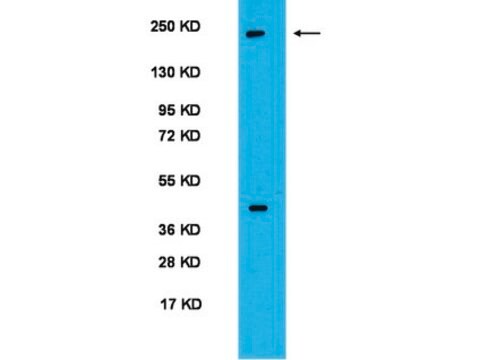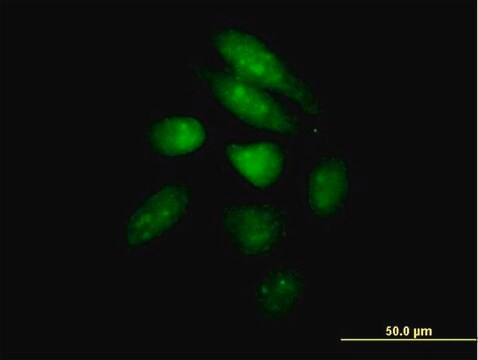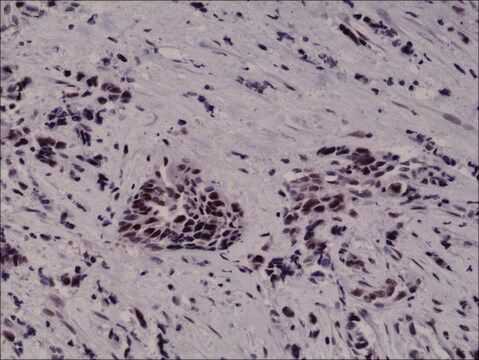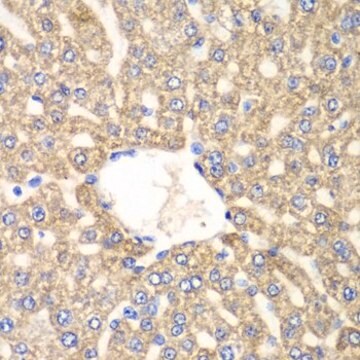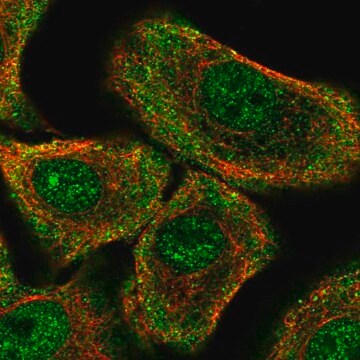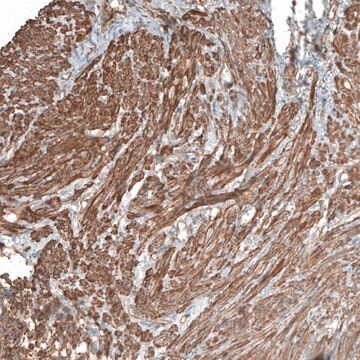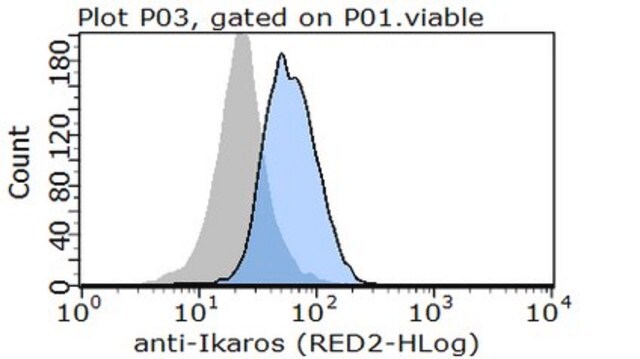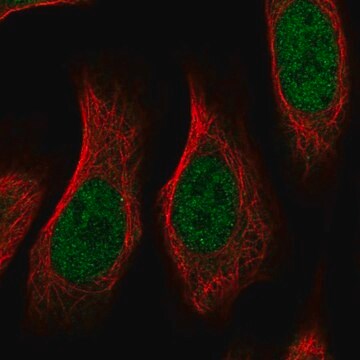AB2201
Anti-mPER1 (residues 6-21) Antibody
serum, from rabbit
Synonym(s):
Circadian clock protein PERIOD 1, Circadian pacemaker protein Rigui, Period, drosophila, homolog of period 1, period (Drosophila) homolog 1, period homolog 1 (Drosophila)
About This Item
Recommended Products
biological source
rabbit
Quality Level
antibody form
serum
antibody product type
primary antibodies
clone
polyclonal
species reactivity
human, mouse, rat
technique(s)
western blot: suitable
GenBank accession no.
UniProt accession no.
shipped in
wet ice
target post-translational modification
unmodified
Gene Information
mouse ... Per1(18626)
General description
Specificity
Application
Tested on whole brain (SCN; peak staining at CT/ZT12). Optimium working dilutions need to be determined by end used.
Quality
Target description
Legal Information
Not finding the right product?
Try our Product Selector Tool.
Storage Class Code
10 - Combustible liquids
WGK
WGK 1
Regulatory Listings
Regulatory Listings are mainly provided for chemical products. Only limited information can be provided here for non-chemical products. No entry means none of the components are listed. It is the user’s obligation to ensure the safe and legal use of the product.
JAN Code
AB2201:
Certificates of Analysis (COA)
Search for Certificates of Analysis (COA) by entering the products Lot/Batch Number. Lot and Batch Numbers can be found on a product’s label following the words ‘Lot’ or ‘Batch’.
Already Own This Product?
Find documentation for the products that you have recently purchased in the Document Library.
Our team of scientists has experience in all areas of research including Life Science, Material Science, Chemical Synthesis, Chromatography, Analytical and many others.
Contact Technical Service